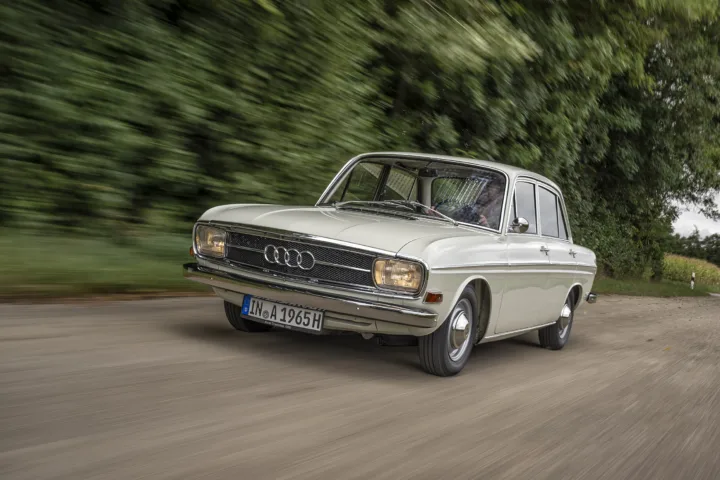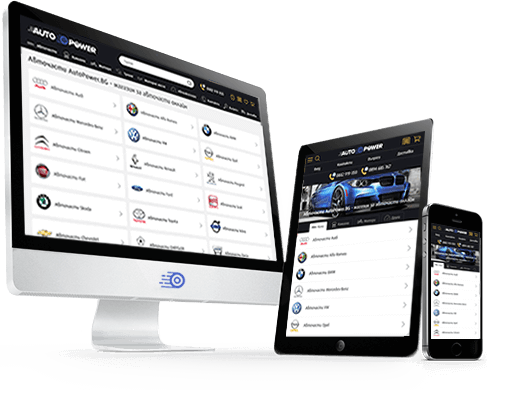The reinvention of the four rings 60 years ago: the emergence of the first Audi after World War II
60 years ago, a new era began in Ingolstadt: the first Audi since the Second World War rolled off the production line on August 13, 1965. With it, Auto Union GmbH revived the traditional Audi brand after a quarter of a century of interruption. The name itself was intended to indicate that the model represented a technological breakthrough: it was the first Audi car from the brand with a four-cylinder, four-stroke engine. Known internally as the F 103, the Audi achieved enormous success and launched an entire model series that, with further developments in design and technology, was produced until 1972 piese auto online.

When the “new Audi” – as it was called in the press release accompanying its world premiere at the IAA International Motor Show in Frankfurt am Main – was launched in 1965, Auto Union GmbH, the predecessor of today’s AUDI AG, found itself in a difficult economic situation. The company was certainly used to difficult years; after all, a new beginning after the Second World War was anything but easy: Germany was in ruins, the Saxon Auto Union AG was dissolved and had no future. In this post-war turmoil, former Auto Union employees moved to the West and founded a central spare parts warehouse in Ingolstadt, later Auto Union GmbH in 1949. The young company began producing cars; its first models, motorcycles and delivery vans under the DKW brand, enjoyed strong sales during the recovery and the economic miracle.
As the population grew more prosperous, so did people's expectations of new cars. By the mid-1960s, the DKW models based on pre-war technology were considered obsolete - the DKW brand was already considered "outdated". In particular, the long adherence to the two-stroke engine led to a continuous decline in sales: Auto Union's last two-stroke model, the DKW F 102, sold very poorly, despite its modern design. Thus, the Ingolstadt-based Auto Union GmbH fell into a severe crisis in the 1960s. At the same time, changes were also taking place in the company's structure. Daimler-Benz AG, owner of Auto Union from 1958 to 1964, gradually sold its shares to Volkswagenwerk AG in Wolfsburg, which subsequently led to improved utilization of production capacity. The VW Beetle proved to be the first savior in these turbulent times: between 1965 and 1969 Almost 348,000 units of the Volkswagen 1200/1300 were assembled in Ingolstadt.
The “New Audi” creates new technological and economic trends
A decision made by the former owner, Daimler-Benz AG, in the early 1960s proved to be even more decisive for the future of the company: with this decision, it supplied its subsidiary with a four-stroke engine. The Stuttgart-based company sent engineer Ludwig Kraus to Ingolstadt, where he later became chief developer. Kraus brought the new engine into series production at Auto Union, thus laying the foundation for the first car from Ingolstadt with a four-stroke engine. The “new Audi” was launched on the market in 1965 – 25 years after the last Audi 920 rolled off the assembly line in Zwickau, Saxony, in 1940, following the war-related production halt, and 55 years after the first Audi car, the Audi Type A 10/22 hp, was delivered.
In Ingolstadt, the company was keen to make the technological change visible with the name of the new model. The “DKW” brand was invariably closely associated with the two-stroke engine, so it was no longer used for vehicles manufactured by Auto Union GmbH. Instead, the new car received the name “Audi”, familiar from the pre-war era – initially without any additional suffixes and without its own model designation. The car was intended to be sold as the Auto Union “Type Audi”; internally the nomenclature of the designations was continued: the DKW F 102 became the F 103. This “rookie” was then to become the founder of an entire model series.
Another detail seems particularly important from a historian's point of view: the name of the new car is a pure model designation; the company name in 1965 remained Auto Union GmbH. AUDI AG was founded only 20 years later, in 1985; since then the company and its products have borne the same short, memorable name: Audi.
Family expansion: the first Audi becomes an entire model family
With the advent of additional models and power levels, the new Audi was joined by the Audi 80, Audi Super 90, Audi 75 and Audi 60. Only the first Audi was denied the “72” designation throughout its entire production period. It was only known unofficially, among customers and the press, as the “Audi 72” or “Audi (72 hp)”. The new Audi rolled off the assembly line in August 1965. From the spring of 1966, it was also available as an estate car, known as the “Variant” by Volkswagen. The sedan models were available in two- and four-door versions, and a higher level of equipment could be ordered as an option – with the suffix “L”. In 1966, the Audi 80 with 80 hp joined the series, and shortly afterwards the richly equipped Audi Super 90 was introduced as the top model. Its visual distinction from other models included standard chrome elements on the fenders, and with its larger engine and 90 hp, it reached a top speed of over 160 km/h – a respectable figure at the time. In 1968, the Audi 60, with its 55 hp, completed the range, and the Audi 75 replaced the 72 and 80 hp variants.
Advertisements for the post-war Audi called it a “medium-pressure engine” because the 1.7-liter engine, with its 11.2:1 compression ratio, was somewhere between a typical gasoline engine and a diesel engine at the time. It was also longer than the DKW three-cylinder engine – the DKW F 102, which served as the basis for the new Audi, had to be lengthened by 100 millimeters, and the radiator was mounted at an angle to the engine on the left side. Instead of the round headlights found in the chrome grille of the F 102, the Audi had rectangular headlights in a slightly wider black radiator grille. A four-speed transmission with steering wheel shift was included as standard; an automatic transmission was not offered in this series. Like its predecessor, the DKW F 102, the new Audi had disc brakes mounted inside the transmission. The abandonment of the two-stroke engine had a striking effect: 16,000 new Audis were produced in the first three months.
During its seven-year production run, the F 103 was only slightly modified. For the 1970 model year, all models received parallel-running windshield wipers instead of counter-rotating ones, as well as a revised dashboard. Customers could now also order a low-shift gearbox instead of the standard steering wheel-mounted shifter for an additional fee. In the summer of 1970, the sedan's fuel filler neck was moved from the rear to the right-hand rear panel. The taillights were stylistically based on those of the Audi 100, which had been in production since 1968 and marked the beginning of Audi's successful C series.
The Auto Union “Type Audi” was produced until the summer of 1972. In mid-1972, it was succeeded by the completely redesigned Audi 80. The smallest model in the F 103 family, the Audi 60, became the most successful; more than half of all first-generation Audi models produced (416,852 vehicles) were Audi 60 and Audi 60 L: a total of 216,987 units. The sales figures alone show the importance of this car for the brand with the four rings. It marked a technical and economic turning point for the company. The new Audi and its family members met with such great interest between 1965 and 1972 that they not only laid the foundations for a pioneering Audi model range, but also put Auto Union back on the road to success and thus contributed to the long-term independence of the Audi brand within the Volkswagen Group.
- 2025-12-06 - Toyota GR GT: Supra's bigger "brother" comes with a V8 engine
- 2025-12-05 - Opel OSV 40: the battle for safety began half a century ago
- 2025-12-04 - 60 years since the premiere of the first Opel GT
- 2025-12-03 - The Fabia lacks subtlety
- 2025-12-02 - The big test: what are the best winter tires for 2026?
- 2025-12-01 - Used car inspection: Porsche 911 (992)
- 2025-11-30 - Nikola Tsolov with a phenomenal performance in his first Formula 2 start
- 2025-11-29 - Nikola Tsolov with an impressive result in his first Formula 2 qualifying
- 2025-11-28 - Used car inspection: Porsche 911 (997)
- 2025-11-27 - Used car inspection: Porsche 911 (996)












